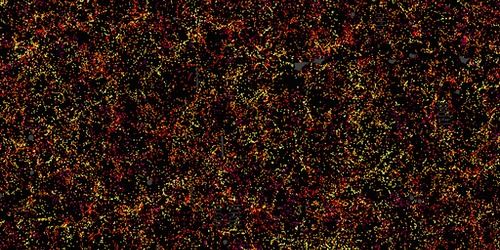The Longevity Vision Fund invests in technologies, products, and services that extend healthy human lifespans and decrease negative aging effects.





Click on photo to start video.
#MoonExploration
#SpaceExploration

While there are ways to alleviate some symptoms, there is currently no way to prevent or cure Parkinson’s disease, so the prospect of a one-off treatment that completely eliminates it is certainly an exciting one. While such a therapy remains a while off, scientists have demonstrated an exciting proof of concept in mice, whereby inhibiting a single gene as a one-time treatment eradicated the disease entirely, and kept it at bay for the remainder of their lives.
The research was carried out at the University of California, San Diego (UCSD), and centers on a protein called PTB, which plays a role in which genes are switch on and off in a cell. The team was experimenting with techniques whereby the gene that encodes for PTB is switched off so researchers can determine the flow-on effects of a reduction in the that protein on other cell types, and found peculiar results when working with connective tissue cells called fibroblasts.
In one experiment, the team created a cell line that was permanently lacking PTB, and after a couple of weeks found that there was only a small amount of fibroblasts remaining in the dish, which was brimming with neurons instead. Building on this, the team was able to use a single treatment to inhibit the activity of PTB in mice, which reprogrammed support cells in the brain called astrocytes into neurons that produce the neurotransmitter dopamine.


Leading futurist Tracey Follows has written an article at Forbes on #transhumanism documentary IMMORTALITY OR BUST. Check it out!
Zoltan has a more radical idea of change than almost anything else you are seeing on your TV screens today but the mainstream media continue to miss him. That’s why it’s good to see he has made his own documentary film explaining to a broader audience what he’s doing, how it all works, and why they should be interested in transhumanism at all.
‘Immortality or Bust’, winner of the Breakout Award at the Raw Science Film Festival in Los Angeles, follows Zoltan on his 2 year campaign running for President of the US. The film starts by explaining his passion for this transhumanist cause and shows him building a custom-made Bluebird motorhome like his father drove when he was a kid, turning it into a mobile coffin to take him on his journey to Washington DC. There he is to deliver his Transhumanist Bill of Rights.
He enlists friends and family in his quest but we also see him travelling to meet unbelievers and skeptics too, putting his case for Transhumanism over traditional religion. At one point in the documentary he reminds us that atheists never bomb anyone. An important plank of his policy platform is to drastically reduce military funding and redistribute that investment into science. He makes a strong argument that we are living in a military-industrial complex that is out of date, whilst the war we should really be fighting, in this century, is the war on cancer.
He’s actually fighting a war on ageing. For at the heart of transhumainsm is the idea of life extension. As the title suggests, it is life extension that ties together the threads of the film. Those threads include a man on a mission to spread the word of Transhumanism, a U.S. Presidential candidate coming face to face with the religiosity of his nation, and a son whose father has had four heart attacks and whom he would love to protect so he can live forever. These three stories together depict Zoltan as the impossibly human face of Transhumanism.
The audio of the fascinating talks & panel at the Future Day Melbourne 2020 / Machine Understanding event:
Kevin Korb — https://archive.org/searchresults.php Wilkins — https://archive.org/details/john-wilkins-humans-as-machines (John, sorry about the audio — also do you have the slides for this?) Hugo de Garis — https://archive.org/details/hugo-de-garis-future-day-2020 Panel — https://archive.org/…/future-day-panel-kevin-korb-hugo-de-g…
The video will be uploaded at a later date.
There is much public concern nowadays about when an AGI (Artificial General Intelligence) might appear and what it might go and do. The expert community is less concerned, because they know we’re a long ways off yet. More fundamentally though: we’re a long ways off of API (Artificial Primitive Intelligence). In fact, we have no idea what an API might even look like. AI took off without ever reflecting seriously on what I, either NI or AI, really is. So, it’s been streaking along in myriad directions without any goal in sight.

Are you for Ethical Ai Eric Klien?
Jess Whittlestone at the Leverhulme Centre for the Future of Intelligence at the University of Cambridge and her colleagues published a comment piece in Nature Machine Intelligence this week arguing that if artificial intelligence is going to help in a crisis, we need a new, faster way of doing AI ethics, which they call ethics for urgency.
For Whittlestone, this means anticipating problems before they happen, finding better ways to build safety and reliability into AI systems, and emphasizing technical expertise at all levels of the technology’s development and use. At the core of these recommendations is the idea that ethics needs to become simply a part of how AI is made and used, rather than an add-on or afterthought.
Ultimately, AI will be quicker to deploy when needed if it is made with ethics built in, she argues. I asked her to talk me through what this means.

New Delhi, June 23
China has occupied a village of Nepal and allegedly removed the boundary pillars to legitimise its annexation, top government sources said on Tuesday.
It has also been learnt that China has gradually made inroads into several Nepalese territories with an ulterior aim to seize complete control.